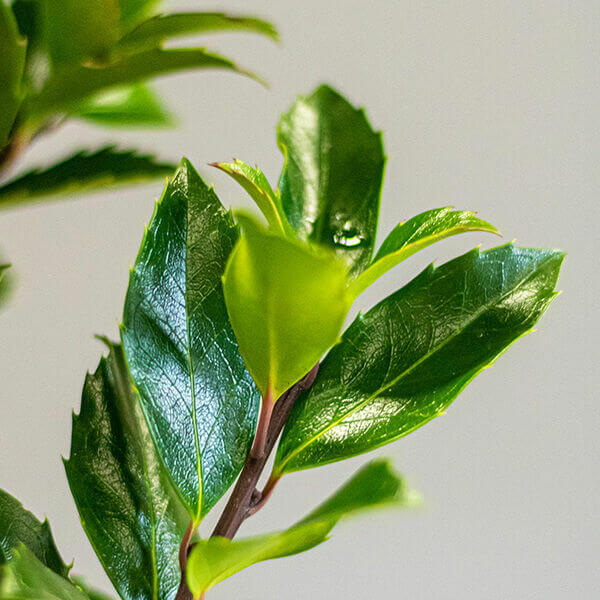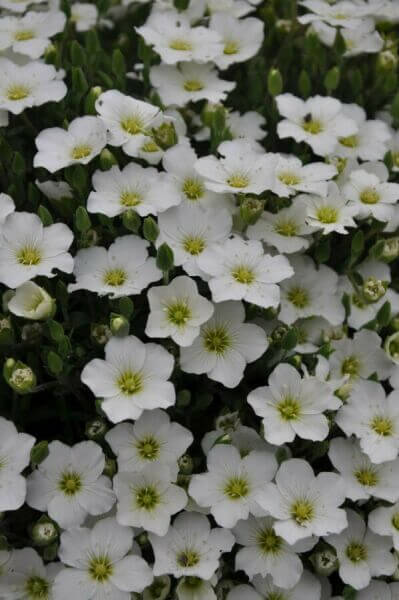Best Hedging Plants For Informal Landscaping
Boost your garden's allure with lavish hedge ranges such as Yew (Taxus), Thuja, Laurel, Photinia, and Bamboo, celebrated for their structural stability and environmental benefits.
Yew and Thuja offer evergreen protection and winter season strength, while Laurel uses rapid growth and broad, fragrant leaves.
Photinia adds seasonal charm with its dynamic red foliage, and Bamboo lends a low-maintenance, serene atmosphere.
These hedges enhance air quality, decrease noise, and develop tranquil, personal spaces.
Appropriate planting, spacing, and maintenance make sure energetic growth and eco-friendly consistency.
Explore how these lavish ranges can elevate your garden's appeal and well-being.
Key Takeaways
Change Your Garden With Lush Hedge Varieties
- Select Yew for its thick, evergreen development and unrivaled durability.
- Select Laurel for its fast development and broad leaves, guaranteeing quick privacy.
- Pick Photinia for its lively seasonal foliage, which turns a striking dark red.
- Utilize Bamboo for a low-maintenance, winter-hardy hedge with visual appeal.
- Space plants 2-3 per meter and prune routinely for optimum growth and health.
Popular Hedge Plants
When transforming a garden with lavish hedge varieties, it's necessary to consider popular hedge plants such as Yew, Thuja, Laurel, and Photinia due to their unique qualities and advantages.
Yew (Taxus) is highly respected for its durability and dense, green development, making it a prime choice for sustaining landscapes.
Thuja is noted for its evergreen foliage and robust winter season resilience.
Photinia includes seasonal vibrancy with red leaves that darken with time, producing vibrant visual appeal.
Laurel offers fast development and fragrant, broad leaves, suitable for fast personal privacy.
In Addition, Bamboo is an outstanding choice for atmosphere, providing a low-maintenance, winter-hardy choice that enhances the garden's aesthetic with its sophisticated, swaying walking canes.
These choices accommodate a range of horticultural needs and choices.
Advantages of Garden Hedges
Garden hedges offer a plethora of benefits, making them a valuable addition to any landscape. These natural barriers are affordable to implement and provide significant wind protection, improving air circulation and contributing to noise decrease. The thick foliage of hedges like Thuja and Beech guarantees personal privacy by blocking exposure, developing a secluded and serene environment.
Hedges likewise play an essential function in microclimate guideline, offering a stable environment that cultivates plant growth and lessens temperature changes. Their elaborate leaf structures filter pollutants, enhancing air quality and contributing to a healthier garden community.
Moreover, hedges master sound reduction, absorbing and deflecting sound waves to lower ambient sound levels. This dual performance of supplying both acoustic and visual personal privacy improves the total tranquility and visual appeal of any garden.
Planting and Upkeep Tips
For a successful hedge, precise preparation of the planting location is essential. Make sure the soil has correct pH and drainage to support strong root development.
Area the plants appropriately for the selected types. Water the hedge regularly during its initial development stage, adjusting as needed with seasonal modifications.
Carry out a organized pest control and disease avoidance method, utilizing organic or chemical treatments when needed. Frequently inspect for aphids, mites, and fungal infections.
Apply mulch to keep wetness and reduce weeds. Seasonal pruning promotes thick development and air circulation, essential for plant health.
Following these guidelines will help you cultivate a dynamic, properly maintained hedge that boosts the beauty of your garden.
Spacing and Trimming Guidelines
Spacing and Trimming Guidelines
Proper spacing and trimming are essential for cultivating healthy, visually appealing hedges. Sufficient spacing guarantees each plant receives adequate nutrients, light, and airflow.
Follow these guidelines for optimal hedge maintenance:
- Spacing: Position hedge plants 2-3 plants per meter to encourage robust growth.
- Pruning Techniques: Routine pruning is necessary for keeping wanted hedge height and shape. Cut brand-new growth in summer and cut back older wood during winter.
- Seasonal Care: Adjust trimming schedules and techniques according to seasonal requirements to ensure plant health.
- Hedge Height: Regularly display and cut to preserve the preferred hedge height and achieve consistent looks.
Following these steps will guarantee your hedge prospers, improving both the appeal and performance of your garden.
Choosing the Right Hedge
Picking the Right Hedge
Picking the suitable hedge involves examining elements such as mature height, foliage density, and ecological durability. Successful hedge plant choice requires comprehending each types' growth attributes and site-specific versatility.
For example, Yew (Taxus) uses excellent durability and dense Additional reading development, while Thuja is significant for its winter strength. Furthermore, thinking about maintenance requirements is vital; fast-growing species like Laurel or Privet need regular cutting, whereas low-maintenance options like Bamboo or Ivy may be preferable for those looking for minimal upkeep.
Ecological factors such as soil type, light schedule, and moisture conditions must likewise guide the choice process. This cautious technique ensures the selected hedges will grow, providing both functional and visual advantages to the garden landscape.
Delivery and Planting Recommendations
To guarantee your hedge plants thrive, they must be provided by specialized carriers and planted quickly upon arrival.
Follow these vital actions for successful planting:
- Soil Preparation: Enrich the soil with raw material to enhance drain and nutrient content.
- Planting Depth: Create a trench twice the width and equivalent to the depth of the root ball.
- Watering Methods: Water completely after planting, keeping the soil consistently damp however not filled.
- Mulching: Use a layer of mulch to retain moisture and suppress weeds.
Client Assistance and Service
Offered the crucial role of timely support in horticultural pursuits, our client support group is offered 6 days a week through telephone, e-mail, and social networks to use skilled advice and swiftly deal with any issues. Their devotion to fast action times makes sure consumer fulfillment by solving questions connected to plant health, optimum planting approaches, and upkeep schedules.

Reaction Time
Within 24 hr
This thorough support system, reinforced by an outstanding 9.3/ 10 client ranking, highlights our dedication to boosting the gardening experience for every client.
Frequently Asked Questions
How Long Does It Take for Hedge Plants to Establish?
Hedge plants typically require one to three years to become fully established, with the exact period differing by types and growing conditions.
Reliable care throughout this vital period is important for robust growth. Consistent watering, alert weed control, and proper fertilizer application are critical in promoting strong root development.
For example, fast-growing species like Laurel might develop more rapidly, while slower-growing varieties such as Yew might take longer. Diligent upkeep speeds up the facility process, resulting in healthy and thick hedges.
What Are the very best Hedge Plants for Personal Privacy?
The question of the best hedge plants for personal privacy includes assessing evergreen and deciduous options.
Evergreen hedges like Thuja, Laurel, and Cypress offer year-round coverage, making sure constant personal privacy.
In contrast, deciduous hedges such as Beech offer seasonal personal privacy, shedding leaves in chillier months.
Key upkeep ideas for privacy hedges consist of routine trimming, fertilizing in spring, and correct spacing-- usually 2 to 3 plants per meter.
Furthermore, consistent watering and persistent weed removal are vital for promoting healthy, dense growth.
Can Hedge Plants Draw In Wildlife to My Garden?
Yes, hedge plants can attract wildlife to your garden by supplying vital benefits like shelter, food, and nesting websites, consequently enhancing regional biodiversity. Yew, holly, and laurel are exceptional for drawing in birds, while ivy supports a range of insects.
Nevertheless, it is necessary to keep in mind that there are some drawbacks, such as increased maintenance to handle pests and routine upkeep. Carefully picking and maintaining hedge varieties can assist balance these benefits and downsides, eventually fostering a dynamic and sustainable ecosystem in your garden.
Are There Any Blooming Hedge Plants Available?
Yes, there are flowering hedge plants readily available that can enhance the charm of your garden.
For instance, Elaeagnus, likewise referred to as Olive Willow, produces fragrant white flowers in the fall, including a touch of elegance.
Photinia, another popular choice, showcases dynamic red leaves that develop into an abundant green, developing a dynamic visual impact throughout the seasons.
To guarantee these plants prosper, it's necessary to practice proper pruning methods and seasonal maintenance, such as trimming brand-new development in the summer season and cutting down in the winter.
These measures will help preserve the health and visual appeal of your blooming hedges.
How Do I Avoid Insects in My Hedge Plants?
To avoid insects in hedge plants, utilize natural bug control approaches and keep correct hedge care. Present helpful pests like ladybugs, which victimize damaging bugs, to develop a well balanced environment.
Regularly check your hedges for indications of problem and without delay get rid of any affected parts to prevent the spread. Ensure the health of your hedges by applying well balanced fertilizers and offering appropriate water.
Use mulching to maintain soil moisture and appropriate spacing to minimize plant stress and promote robust growth. These practices collectively assist in decreasing bug problems and maintaining a healthy hedge.
Conclusion
In essence, choosing the ideal hedge ranges such as Yew, Thuja, and Laurel can transform any garden into a tranquil sanctuary. These plants offer year-round greenery, improve aesthetic appeal, and deal useful benefits like sound decrease and wind protection.
Proper planting strategies, accurate spacing, constant watering, and seasonal cutting are important for optimum development.
Trustworthy delivery services and skilled customer support guarantee a seamless experience from purchase to planting, making it easier than ever to raise your outdoor area.
Garden hedges use a plethora of benefits, making them a valuable addition to any landscape. These natural barriers are cost-efficient to implement and offer substantial wind protection, improving air flow and contributing to sound reduction. The dense foliage of hedges like Thuja and Beech guarantees privacy by blocking presence, developing a serene and secluded environment.

Pruning Strategies: Routine pruning is important for maintaining preferred hedge height and shape. Trim brand-new growth in summer season and cut back older wood during winter season.